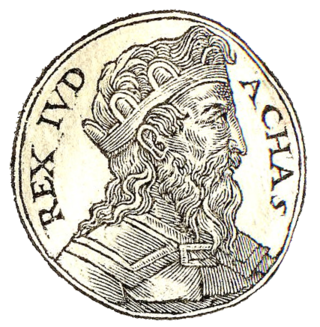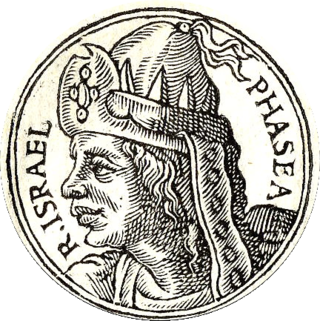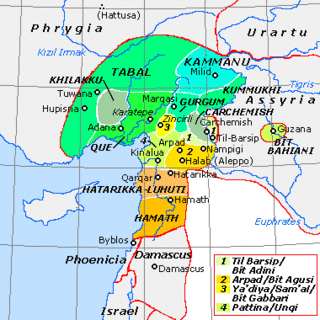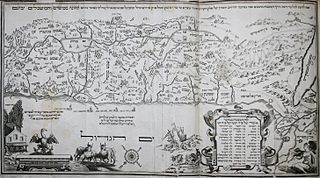This article needs additional citations for verification .(August 2012) |
This article concerns the period 739 BC – 730 BC.
Contents
| Millennium |
|---|
| 1st millennium BC |
| Centuries |
| Decades |
| Years |
|
| Categories |
This article needs additional citations for verification .(August 2012) |
This article concerns the period 739 BC – 730 BC.
| Millennium |
|---|
| 1st millennium BC |
| Centuries |
| Decades |
| Years |
|
| Categories |
The 8th century BC started the first day of 800 BC and ended the last day of 701 BC. The 8th century BC was a period of great change for several historically significant civilizations. In Egypt, the 23rd and 24th dynasties lead to rule from Kingdom of Kush in the 25th Dynasty. The Neo-Assyrian Empire reaches the peak of its power, conquering the Kingdom of Israel as well as nearby countries.
This article concerns the period 729 BC – 720 BC.

Ahaz an abbreviation of Jehoahaz II, "Yahweh has held" was the twelfth king of Judah, and the son and successor of Jotham. Ahaz was 20 when he became king of Judah and reigned for 16 years.

Tiglath-Pileser III was the king of the Neo-Assyrian Empire from 745 BC to his death in 727. One of the most prominent and historically significant Assyrian kings, Tiglath-Pileser ended a period of Assyrian stagnation, introduced numerous political and military reforms and more than doubled the lands under Assyrian control. Because of the massive expansion and centralization of Assyrian territory and establishment of a standing army, some researchers consider Tiglath-Pileser's reign to mark the true transition of Assyria into an empire. The reforms and methods of control introduced under Tiglath-Pileser laid the groundwork for policies enacted not only by later Assyrian kings but also by later empires for millennia after his death.

Pekah was the eighteenth and penultimate king of Israel. He was a captain in the army of king Pekahiah of Israel, whom he killed to become king. Pekah was the son of Remaliah.

Shalmaneser V was the king of the Neo-Assyrian Empire from the death of his father Tiglath-Pileser III in 727 BC to his deposition and death in 722 BC. Though Shalmaneser V's brief reign is poorly known from contemporary sources, he remains known for the conquest of Samaria and the fall of the Kingdom of Israel, though the conclusion of that campaign is sometimes attributed to his successor, Sargon II, instead.

Hoshea was the nineteenth and last king of the northern Kingdom of Israel and son of Elah. William F. Albright dated his reign to 732–721 BCE, while E. R. Thiele offered the dates 732–723 BCE.

Menahem or Menachem was the sixteenth king of the northern Israelite Kingdom of Israel. He was the son of Gadi, and the founder of the dynasty known as the House of Gadi or House of Menahem.
Tiglath-Pileser II was King of Assyria from 967 BCE, when he succeeded his father Ashur-resh-ishi II, until his death in 935 BCE, when he was succeeded by his son Ashur-dan II. Little is known about his reign.
The King of Tyre was the ruler of Tyre, the ancient Phoenician city in what is now Lebanon. The traditional list of 12 kings, with reigns dated to 990–785 BC, is derived from the lost history of Menander of Ephesus as quoted by Josephus in Against Apion I. 116–127. Josephus asserts that Menander had drawn his list from the chronicles of Tyre itself. Menander-Josephus also contains a list of 9 kings and judges, with reigns dated to 591–532 BC in Against Apion I. 154–160.

The Kingdom of Aram-Damascus was an Aramean polity that existed from the late-12th century BCE until 732 BCE, and was centred around the city of Damascus in the Southern Levant. Alongside various tribal lands, it was bounded in its later years by the polities of Assyria to the north, Ammon to the south, and Israel to the west.

During the Middle Assyrian Empire and the Neo-Assyrian Empire, Phoenicia, what is today known as Lebanon and coastal Syria, came under Assyrian rule on several occasions.

The Neo-Assyrian Empire arose in the 10th century BC. Ashurnasirpal II is credited for utilizing sound strategy in his wars of conquest. While aiming to secure defensible frontiers, he would launch raids further inland against his opponents as a means of securing economic benefit, as he did when campaigning in the Levant. The result meant that the economic prosperity of the region would fuel the Assyrian war machine.
Rezin of Aram was an Aramean King ruling from Damascus during the 8th century BC. During his reign, he was a tributary of King Tiglath-Pileser III of Assyria.
Hiram II (Hi-ru-mu) was the Phoenician king of Tyre from 737 to 729 BC. In 738 he was listed as a tributary of the Assyrian king Tiglath-pileser III. His predecessor, Ithobaal II, was also stated to have paid tribute in that year. It is possible that the date in the Assyrian record is in error and Hiram's reign did not begin until 737. Hiram II should not be identified with the "Hiram, king of the Sidonians" who paid tribute to the Assyrians at an earlier date.
Ithobaal II was an eighth-century BC Phoenician king of Tyre. Nothing is known of his reign except that he paid tribute to the Assyrian king Tiglath-pileser III in 738. He was succeeded that year or the next by Hiram II, who continued the tribute to the Assyrians.

Gurgum was a Neo-Hittite state in Anatolia, known from the 10th to the 7th century BC. Its name is given as Gurgum in Assyrian sources, while its native name seems to have been Kurkuma for the reason that the capital of Gurgum—Marqas in Assyrian sources —was named "the Kurkumaean city" in local Hieroglyphic Luwian inscriptions.

The timeline of ancient Assyria can be broken down into three main eras: the Old Assyrian period, Middle Assyrian Empire, and Neo-Assyrian Empire. Modern scholars typically also recognize an Early period preceding the Old Assyrian period and a post-imperial period succeeding the Neo-Assyrian period.

The Tribe of Naphtali was one of the northernmost of the twelve tribes of Israel. It is one of the ten lost tribes.